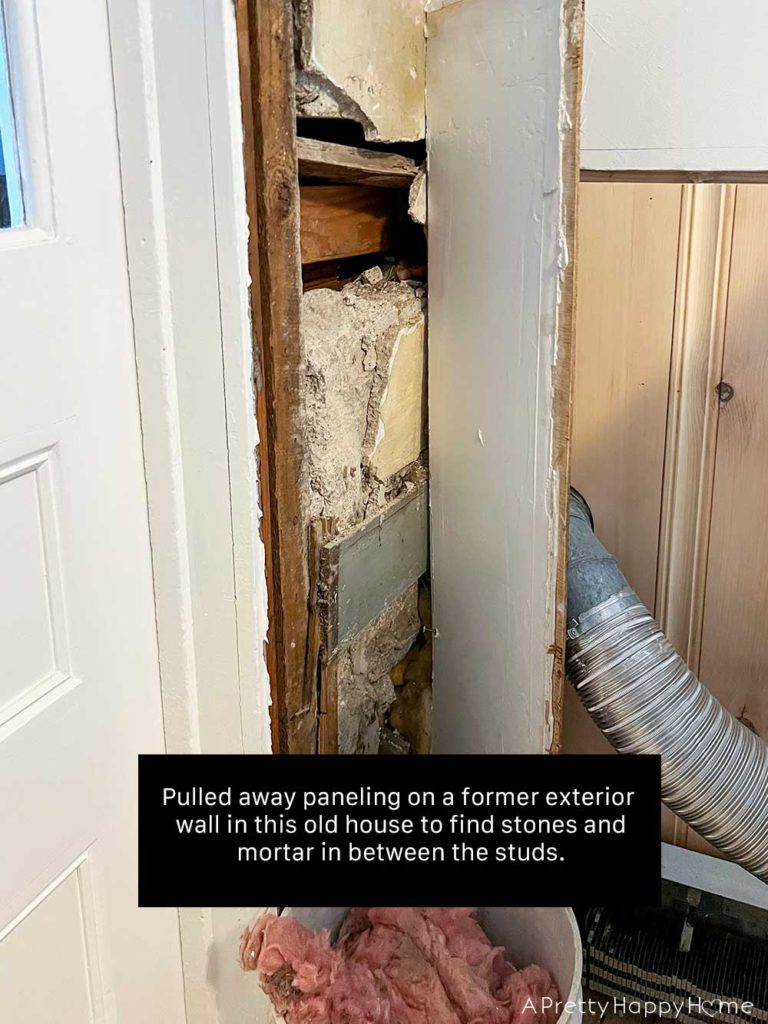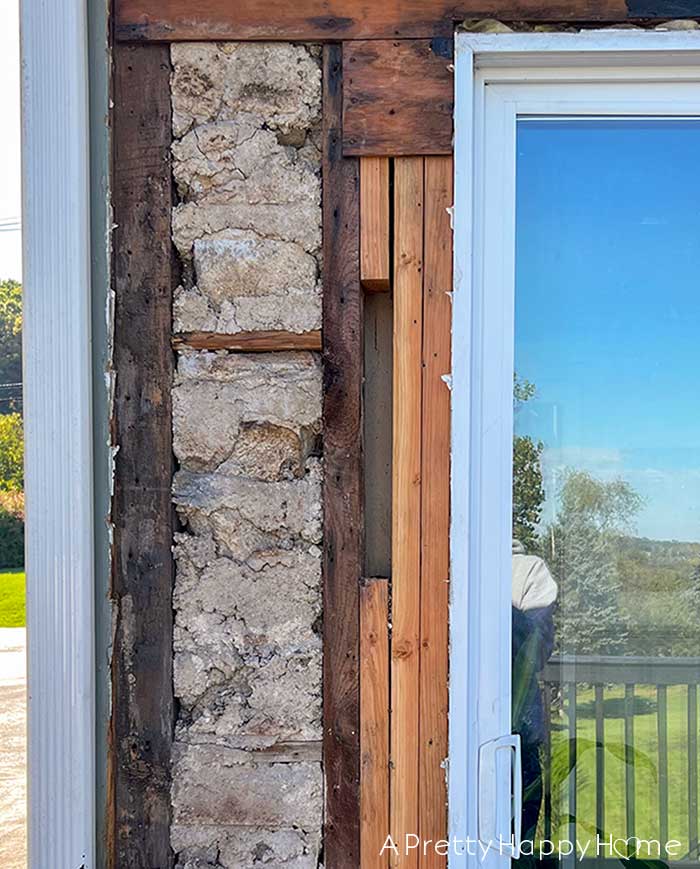
3 Reasons Old Houses May Have Stones Between The Studs
If you own a really old house you might have discovered stones or bricks instead of insulation in between the studs in your walls. It begs the question why do old houses have stones between the studs?
Someone went to an awful lot of trouble to install those stones or bricks there. They had to have had a decent reason to undertake that back-breaking work.
There are 3 possible reasons that really old houses, particularly those built in the 1700s and 1800s, may have stones or bricks in between the studs in the walls.
First, let me say that I am the owner of a home built in the eastern United States that dates back to the 1780s. I am not an architect or a historic preservationist.
As we’ve opened up our walls (plaster and drywall) for various reasons and discovered them filled with bricks or stone and mortar, it has sent us down the rabbit hole of finding out why this was done.
The internet is wishy-washy on this topic. The historical architecture books I’ve checked out from the library don’t dedicate many words to this topic. Perhaps I haven’t read the correct books yet.
The preservationist at our local historical society has been the most helpful in confirming why old houses may have stones between the studs.
Here’s what I’ve learned while doing my research. If you have information to add to this topic, please do so in the comments so that we can all learn together!
Reason #1 why old houses may have stones between the studs: THERMAL MASS
Stones or bricks may have been placed in between the studs of really old houses to act as insulation of sorts.
Stone is a thermal mass material. That means that it can absorb, store, and release heat. Depending on how long the stone in your walls holds onto heat, it can help regulate the temperature of your home.
Water has the highest thermal mass or volumetric heat capacity (VHC) but concrete, stone, and brick do alright with their VHC ratings and can be used in cold climates to support passive heating. (source)
Our house has a stone foundation that is 18 – 24 inches thick. A couple of our home’s walls are comprised of stone similar to the foundation, but most of our walls (those that haven’t been insulated) have wood framing with stones packed in between the studs. I don’t mean just a few stones…the entire wall cavity is filled with stone from top to bottom.
As long as the outside temperature stays between 45° Fahrenheit and 75° Fahrenheit, the inside temperature of our house will stay in the 60s Fahrenheit. That’s totally livable in our climate, especially considering that our house was built before homes had electricity and indoor plumbing.
It’s the extreme heat of summer and the extreme cold of winter when we have problems and have to rely on our modern heating and cooling systems.
Learn more about thermal mass in construction here, here, and here.
Reason #2 why old houses may have stones between the studs: FIRE BLOCKING
It’s no stretch to say that old homes are built differently than modern homes. Building techniques have definitely changed over time.
Some old houses may have been built with what is called balloon framing. Balloon framing can be found all over the U.S. and was common between 1890 and 1930.
Balloon framing refers to a building technique where really long wall studs (up to 30 feet long) span multiple floors, meaning there’s no break in the framing or physical separation between the various stories of a home when it comes to the walls.
This can be a problem if there is a house fire because there’s nothing in the wall cavities to slow down the fire from quickly spreading up the wall from the basement of the house straight to the attic.
Stones between the studs could act as a fire blocker, making it more difficult for the fire to move up the walls from lower levels.
I doubt this was the primary reason stones or bricks were placed in between the wall studs though. There are easier ways to achieve fire blocking. But if you find just a small amount of stones or bricks in the walls, I guess it’s possible.
Platform framing replaced balloon framing, which solved the issue of fire blocking and also allowed builders to use shorter lumber.
Learn more about balloon framing and issues with fire blocking here and here.
Reason #3 why old houses may have stones between the studs: REDUCING DRAFTS
“I live in a drafty house” is a common sentiment expressed by owners of old homes.
It’s possible that stones between the studs had the added benefit of reducing some of the draftiness from being built during a time when homes weren’t sealed up as tight as they are today.
I still don’t think draftiness was the primary reason why stones were placed between the studs – just an added benefit.
Although, you can see from the photo below, that even with a wall cavity packed with stone and mortar, there are still gaps close to the studs where it would be possible for air to get in.
With the information I currently possess, it seems the most likely reason why some old houses may have stones between the studs is for thermal mass.
These walls later created problems when it came to installing indoor plumbing and wiring and making homes more energy efficient. However, I think they did the best they could with the materials and information they had at the time. Modern green building techniques often use thermal mass to some degree, so it seems like things may have come full circle.
What do you think about these possibilities? I’d love to know. If you have information to contribute, questions, corrections, etc. please put them in the comments section so we can all learn together. In addition, you can always email me here, or reach out via Instagram or Facebook. I’m always happy to connect with you.
Thanks for being here today! Here are some other blog posts you might enjoy.
How To Fill Gaps In Wood Floors With Oakum









2 Comments
Jay
I live in an old house too, I’m surprised nobody mentioned rats/pests. When food was much more scarce and people were genuinely hungry at the end of winter…. so were rats. People used EVERYTHING they could get their hands on to fill up any open space so rats could not nest there (rocks/mortar/wood). Partially because disease and fleas but mostly competition for scarce resources (food). Going to bed hungry is not fun when the last of your provisions were eaten by critters. Tip: Before you remove all that thermal mass, put a couple motion activated trail cams and scan yer home with a FLIR. Rats have not gone extinct….
annisa
You bring up an interesting point. I did not find mention of rodents related to this topic but old houses sure seem to be a magnet for them. I joke that our old house is built a bit like a colander. Sturdy but full of holes! I know we’ve spent considerable time/energy in plugging up holes where we think mice can get in. We have a cat and that seems to help too. Somehow, even with all of the stones/bricks in between our studs, the cat, and the work we’ve done to plug holes, every once in a while one of them finds their way all the way up to the attic!